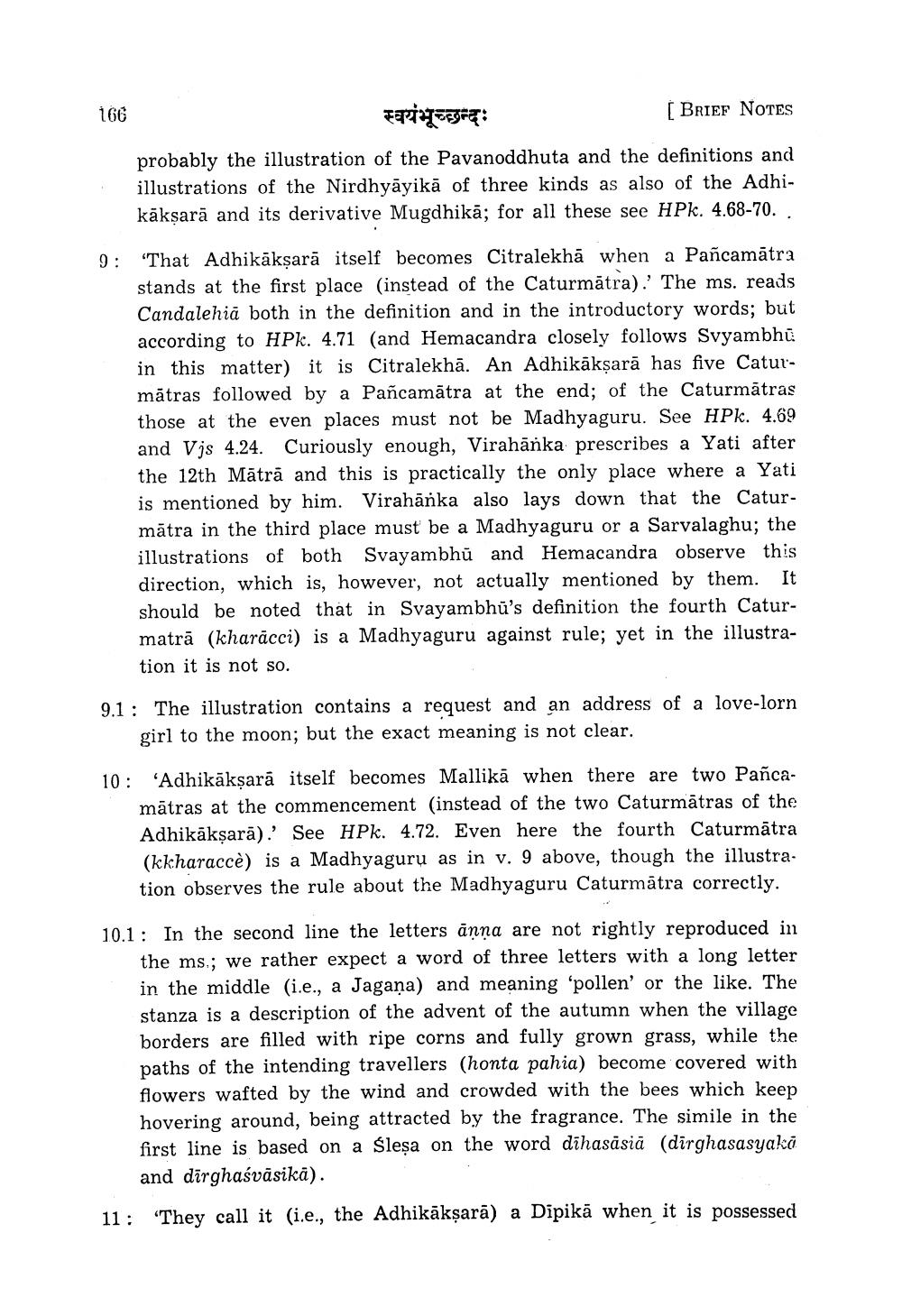________________
166
स्वयंभूच्छन्दः
(BRIEF NOTES
probably the illustration of the Pavanoddhuta and the definitions and illustrations of the Nirdhyāyikā of three kinds as also of the Adhikākṣarā and its derivative Mugdhikā; for all these see HPk. 4.68-70.,
9: "That Adhikākṣarā itself becomes Citralekhā when a Pañcamātra
stands at the first place (instead of the Caturmätra).' The ms. reads Candalehiä both in the definition and in the introductory words; but according to HPk. 4.71 (and Hemacandra closely follows Svyambhu in this matter) it is Citralekha. An Adhikāksarā has five Caturmātras followed by a Pañcamātra at the end; of the Caturmatras those at the even places must not be Madhyaguru. See HPk. 4.69 and Vjs 4.24. Curiously enough, Virahanka prescribes a Yati after the 12th Mātrā and this is practically the only place where a Yati is mentioned by him. Virahānka also lays down that the Caturmātra in the third place must be a Madhyaguru or a Sarvalaghu; the illustrations of both Svayambhū and Hemacandra observe this direction, which is, however, not actually mentioned by them. It should be noted that in Svayambhu's definition the fourth Caturmatrā (kharācci) is a Madhyaguru against rule; yet in the illustration it is not so.
9.1 : The illustration contains a request and an address of a love-lorn
girl to the moon; but the exact meaning is not clear.
10: 'Adhikākṣarā itself becomes Mallikā when there are two Pañca
mātras at the commencement (instead of the two Caturmātras of the Adhikākṣarā).' See HPk. 4.72. Even here the fourth Caturmätra (kkharaccè) is a Madhyaguru as in v. 9 above, though the illustration observes the rule about the Madhyaguru Caturmātra correctly.
10.1: In the second line the letters anna are not rightly reproduced in
the ms; we rather expect a word of three letters with a long letter in the middle (i.e., a Jagana) and meaning 'pollen' or the like. The stanza is a description of the advent of the autumn when the village borders are filled with ripe corns and fully grown grass, while the paths of the intending travellers (honta pahia) become covered with flowers wafted by the wind and crowded with the bees which keep hovering around, being attracted by the fragrance. The simile in the first line is based on a śleșa on the word dihasāsia (dirghasasyako and dirghaśvāsikā).
11: "They call it (i.e., the Adhikākṣarā) a Dipikä when it is possessed




